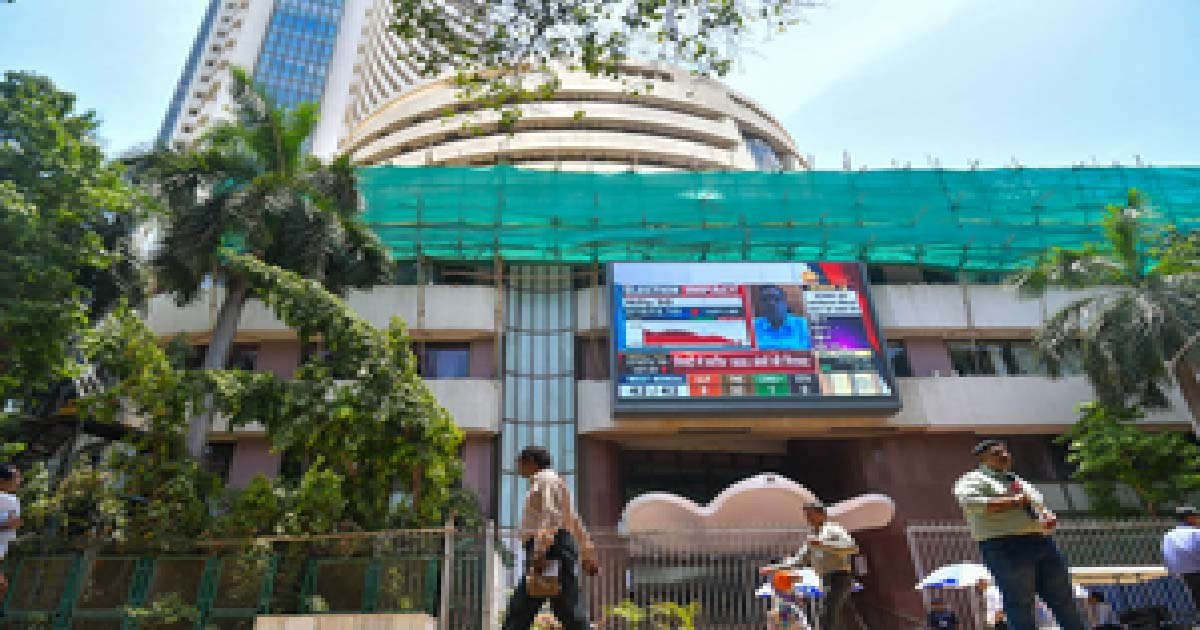Business
Centre notifies new rules providing easier access to electricity transmission network
Power Ministry has promulgated the Electricity (Transmission System Planning, Development and Recovery of Inter-State Transmission Charges) Rules 2021. This paves the way for overhauling of transmission system planning, towards giving power sector utilities easier access to the electricity transmission network across the country.
At present, generating companies apply for long-term access (LTA) based on their supply tie-ups, while medium-term and short-term transmission access is acquired within the available margins. Based on LTA application, incremental transmission capacity is added. A number of sector developments, such as the increasing focus on renewable energy, and the development of the market mechanism, necessitated a review of the existing transmission planning framework based on LTA.
The rules underpin a system of transmission access which is termed as a General Network Access (GNA) in the inter-state transmission system. This provides flexibility to the States as well as the generating stations to acquire, hold and transfer transmission capacity as per their requirements.
In a major change from the present system of taking transmission access, power plants will not have to specify their target beneficiaries. The rules will also empower state power distribution and transmission companies to determine their transmission requirements and build them. Also, states will be able to purchase electricity from short term and medium term contracts and optimise their power purchase costs.
Apart from introducing GNA, the rules also specify clear roles of various agencies involved in the transmission planning process. The Central Electricity Authority shall prepare a short-term plan every year on rolling basis for next 5 years and prospective plan every alternate year on rolling basis for next 10 years. The Central Transmission Utility shall prepare an implementation plan for inter-State transmission system every year on a rolling basis for up to next 5 years which will take into account aspects such as right -of-way and progress of the generation and demand in various parts of the country.
The rules specify how the existing LTA would be transitioned into General Network Access. The rules also outline the recovery of GNA charges from the users of the transmission network and assign the responsibility of billing, collection and disbursement of inter state transmission charges to the Central Transmission Utility.
The rules have enabled, for the first time, that the transmission capacity can be sold, shared or purchased by the States and generators. The rules prescribe that excess drawal or injection over the GNA capacity sanctioned shall be charged at rates which are at least 25 per cent higher and this will ensure that the entities do not under-declare their GNA capacity. The Central Electricity Regulatory Commission (CERC) has been empowered to bring out detailed regulations on GNA in inter state transmission systems.
The Central government has notified these rules with a view to streamline the process of planning, development and recovery of investment in the transmission system. The rules are aimed at encouraging investments in the generation and transmission sectors. The rules will enable the country to develop deeper markets.
Transmission system is the vital linkage in the power sector value chain connecting the generation and the demand. The Central government is committed towards ensuring adequacy of transmission system for the supply of power from one State to another State and across regions. The rules brought out by the Central government underpin that “electricity transmission planning shall be made in such way that the lack of availability of the transmission system does not act as a brake on the growth of different regions and the transmission system shall, as far as possible, to be planned and developed matching with growth of generation and load and while doing the planning, care shall be taken that there is no wasteful investment”.
In a series of other reforms carried out earlier, the Ministry had separated the Central Transmission Utility from POWERGRID to provide transparency and a level playing field in the bids for transmission and reduced the lock-in period for transmission projects in order to attract investments and more competition. The Ministry of Power also issued the Right of Consumer rules, which empower consumers and rules laying down the ceiling for late payment surcharge.
Business
India-New Zealand FTA: PM Modi, Luxon aim to double bilateral trade over 5 years

New Delhi, Dec 22: Prime Minister Narendra Modi held a telephone conversation with New Zealand’s Prime Minister, Christopher Luxon, on Monday as the two leaders jointly announced the successful conclusion of the historic, ambitious and mutually beneficial India-New Zealand Free Trade Agreement (FTA).
During the conversation, both leaders expressed confidence in doubling bilateral trade over the next five years as well as an investment of $20 billion in India from New Zealand over the next 15 years.
The negotiations began in March this year and the two leaders concluded the FTA in a record time of nine months, reflecting the shared ambition and political will to further deepen ties between the two countries, according to a statement from Prime Minister’s Office (PMO).
“The FTA would significantly deepen bilateral economic engagement, enhance market access, promote investment flows, strengthen strategic cooperation between the two countries, and also open up new opportunities for innovators, entrepreneurs, farmers, MSMEs, students and youth of both countries across various sectors,” said the statement.
The leaders also welcomed the progress achieved in other areas of bilateral cooperation such as sports, education, and people-to-people ties, and reaffirmed their commitment towards further strengthening of the India-New Zealand partnership.
This historic FTA eliminates and reduces tariffs on 95 per cent of New Zealand’s exports – among the highest of any Indian FTA – with almost 57 per cent being duty-free from day one, increasing to 82 per cent when fully implemented, with the remaining 13 per cent subject to sharp tariff cuts.
It puts New Zealand exporters on an equal or better footing to our competitors across a range of sectors and opens the door to India’s rapidly expanding middle class, according to an official statement from New Zealand.
“The Indian economy is forecast to grow to NZ$12 trillion by 2030. The India-NZ Free Trade Agreement unleashes huge potential for our world-class exporters to the world’s largest country and will significantly accelerate progress towards New Zealand’s ambitious goal of doubling the value of exports over 10 years,” it added.
Business
Mumbai-Bound Air India Flight Returns To Delhi Airport Minutes After Take Off Due To Technical Glitch

New Delhi: A Mumbai-bound Air India flight AI887 returned to the Delhi Airport minutes after take-off due to a technical issue. The Delhi–Mumbai flight made an emergency landing according to standard operating procedure.
As perv an Air India spokesperson, the aircraft (Boeing 777) landed safely at Delhi, and the passengers and crew disembarked.
The Boeing 777 suffered an engine issue soon after take-off, reported The Times of India. The aircraft reportedly took off at 6.10 am and returned to the airport at 6.52 am. The aircraft is currently undergoing necessary checks.
As per the report, the airline arranged another B777 (VT-ALP) for passengers and even provided refreshments for them.
On Sunday, over 100 flights were cancelled from the Delhi Airport due to dense fog conditions in the national capital. Meanwhile, more than 400 flights were also delayed at the airport.
Over the past few days, most parts of the nothern and northwestern regions of the country are witnessing dense fog condition.
“Dense to very dense fog conditions during night/morning hours very likely in some parts of Uttarakhand, Uttar Pradesh, Haryana till morning hours of 21st; in isolated pockets of Punjab, Haryana during 25th-27,” the India Meteorological Department (IMD) had said in its press statement on Sunday.
On Friday also, an Air India flight travelling from Mumbai to Varanasi was forced to make an emergency diversion to Bhubaneswar after deteriorating weather conditions made landing at the destination airport unsafe. The aircraft landed at Biju Patnaik International Airport (BPIA) as a precautionary measure, airline officials confirmed.
Business
Sensex, Nifty open in green zone amid positive global cues

Mumbai, Dec 22: Indian benchmark indices opened in green zone on Monday, breaking the last week’s trend of edging lower, amid strong buying in the US and China markets.
As of 9.30 am, the Sensex advanced 507 points, or 0.60 per cent, at 84,436 and the Nifty added 165 points, or 0.64 per cent to 26,132.
The broad cap indices performed in line with the benchmarks, with the Nifty Midcap 100 up 0.58 per cent and the Nifty Smallcap 100 adding 0.51 per cent.
Hindalco, Tech Mahindra and TCS were among the major gainers in the Nifty Pack, while losers included Asian Paints, Bajaj Finance, Max Healthcare and Cipla.
All the sectoral indices on NSE were trading in the green with metal, IT and media being the major gainers — up around 1.48, 1.23 and 0.77 per cent, respectively.
Analysts noted that market is likely heading for a year-end rally. The rupee’s sharp reversal and FIIs’ cash market purchases can accelerate this rally, as they lead to short covering, pushing benchmark indices higher. The Goldilocks domestic economic set up and potential earnings growth uptrend can support a market upturn, they added.
The US markets ended mostly in the green zone on the last trading day, as Nasdaq advanced 1.31 per cent, the S&P 500 edged up 0.88 per cent, and the Dow moved up 0.38 per cent.
As investors parsed China’s central bank keeping loan prime rate steady, Asia-Pacific markets rose on Monday.
The People’s Bank of China maintained its 1-year and 5-year loan prime rates steady, which affects most new and outstanding loans and mortgages.
In Asian markets, China’s Shanghai index advanced 0.64 per cent, and Shenzhen dropped 1.36 per cent, Japan’s Nikkei edged up 1.75 per cent, while Hong Kong’s Hang Seng Index added 0.29 per cent. South Korea’s Kospi added 1.72 per cent.
On Friday, foreign institutional investors (FIIs) sold equities worth Rs 2,387 crore, while domestic institutional investors (DIIs) were net buyers of equities worth Rs 5,200 crore.
-

 Crime3 years ago
Crime3 years agoClass 10 student jumps to death in Jaipur
-

 Maharashtra1 year ago
Maharashtra1 year agoMumbai Local Train Update: Central Railway’s New Timetable Comes Into Effect; Check Full List Of Revised Timings & Stations
-

 Maharashtra1 year ago
Maharashtra1 year agoMumbai To Go Toll-Free Tonight! Maharashtra Govt Announces Complete Toll Waiver For Light Motor Vehicles At All 5 Entry Points Of City
-

 Maharashtra1 year ago
Maharashtra1 year agoFalse photo of Imtiaz Jaleel’s rally, exposing the fooling conspiracy
-

 National News1 year ago
National News1 year agoMinistry of Railways rolls out Special Drive 4.0 with focus on digitisation, cleanliness, inclusiveness and grievance redressal
-

 Maharashtra1 year ago
Maharashtra1 year agoMaharashtra Elections 2024: Mumbai Metro & BEST Services Extended Till Midnight On Voting Day
-

 National News1 year ago
National News1 year agoJ&K: 4 Jawans Killed, 28 Injured After Bus Carrying BSF Personnel For Poll Duty Falls Into Gorge In Budgam; Terrifying Visuals Surface
-

 Crime1 year ago
Crime1 year agoBaba Siddique Murder: Mumbai Police Unable To Get Lawrence Bishnoi Custody Due To Home Ministry Order, Says Report












